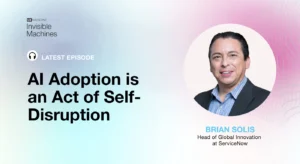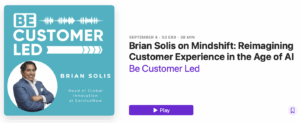
Retail, like every industry, faces digital Darwinism as technology and markets evolve and disrupt. This isn’t new. But what is clear, executives are not prioritizing bold strategies and investments that save them from their “Kodak Moment,” that moment when consumer behaviors and values evolve beyond brand recognition.
If you read about the state of retail today, you’ll see dramatic descriptors such as “apocalypse,” “the end…,” “dying,” you get the picture. While doom and gloom and disruption is inherent in every industry, not everything is lost or hopeless. Those who recognize the gap between today’s value proposition and the evolution of what consumers value and why, will learn exactly how to not only close it but also ways to innovate and introduce new value.
I recently spent time with Hal Conick of the AMA (American Marketing Association) to explore the state and future of retail. He wrote an exceptional piece featuring experts from all sides to help marketers and executives compete for the future right now. I urge you to read his work. Below, I’ve included TL;DR highlights from our discussion for those with limited time.
I hope it helps you…
The Mobile Revolution
The rise of mobile devices has ensured retail will never be the same. Companies must deliver a new customer experience or risk falling into the retail chasm.
There’s a “modern commerce revolution” in retail, according to Brian Solis, a principal analyst at Altimeter (a Prophet company) and author of X: The Experience When Business Meets Design. Consumers are empowered by the flexibility of smartphones and have either subconsciously or intentionally changed how they behave, what they value and how they make shopping decisions. “That’s where all of this disruption is stemming from,” Solis says.
A report from Forrester found that in 2016 mobile devices drove approximately $1.7 trillion in offline retail sales—just greater than half of all retail sales. This means customers are researching on their devices and buying in stores. By 2021, Forrester predicts retail consumers will spend $152 billion via mobile phones—representing 24% of total online sales—and smartphone retail sales will grow 20.4% each year.
Retailers have had trouble responding to this mobile disruption, Solis says, as they still operate in the same “old model” that Kahn referenced. The retail customer journey is now almost unrecognizable from just a few years ago, but many retailers are still trying to make the old customer journey work, Solis says. However, retailers are underinvesting in mobile devices, per Forrester’s report. Companies would have to spend tens, if not hundreds, of millions of dollars to adopt the technology necessary to appease digital-first customers with mobile store maps, mobile coupons and digital inventories. Many businesses simply aren’t doing any of this. Taking bets on digital investments now may mean staying in business in the future, Solis says.
The Experience when Business meets Design
“There is a need to create a bridge between the digital and real world so that they blur and essentially coalesce with one another, but that takes experience, design and architecture, and to get there we have to understand customer modeling,” Solis says. “We have to understand how their favorite apps are impacting how they interact with information and then use that to redesign online experiences to be more like the Ubers and Tinders of their world.”
The Unknown, Changing Customer
Retail executives lack knowledge of who these customers are. This is deeply concerning, Solis says, as many business executives believe Amazon is sapping their traditional customers. However, he says Amazon is actually cultivating its own base of connected customers. This leaves traditional retailers—tilting at windmills like Don Quixote—trying to protect a customer who isn’t there anymore. The connected customer is different, likely young and has only ever known a digital world. In some cases, they are an older customer who has adopted a digital lifestyle.
“There’s very little expertise and experience within the executive ranks of these retailers because they’re still trying to compete against Amazon with existing resources,” Solis says. “Even when they acquire new companies, they’re still operating within a culture that doesn’t necessarily understand innovation, risk-taking and all of the elements that make innovations so compelling.”
One way to become like Generation Z—or at least know how they shop—is to study micro-moments. Coined by Google, the term refers to the brief seconds of decision when people turn to their mobile device to do, buy or learn something. Solis studied micro-moments with Google, researching how retail consumers use mobile devices to shop.
We were witnessing that consumers not only were becoming increasingly mobile-first, but if they had their druthers, they would be mobile-only,” Solis says. “What we learned is that the customer journey is incredibly fragmented, and it’s because of how [consumers] behave, but also frustrating because most customer journeys that exist today are not mobile-intuitive or mobile-native.”
Retailers have tried to bolt onto the existing experiences instead of speaking to the mobile native, Solis says. However, mobile’s supersaturation of the market has created a new set of expectations that piecemeal technology add-ons simply cannot meet. The linear customer funnel—as well as the customer in the funnel—that depended on brand loyalty have changed. Customers studied by Google had no brand in mind during 90% of their micro-moments. Seventy-three percent of consumers made a purchase decision based on which company was the most useful during their micro-moments of retail research. “We’ve watched an incredible shift,” Solis says.
“Read between the lines: Why would Google do this research?” Solis asks. His answer: Customers no longer spend time on traditional websites and have lost patience with horrible experiences on mobile devices. “This is a [consumer] who [retail] executives don’t know,” Solis says.
Little Bets for Big Change
None of this is to forget the traditional customer, who is less familiar with digital shopping but still likely owns a smartphone. While modern, new-school retailers have the luxury of not reinventing their business models, Solis says they have trouble drawing in the traditional customer. This is where “classic” retailers may have a chance to survive and thrive: bridge the gap between the old and new; speak to both groups.
Executives that want to address the gap between old and new may have to be bolder than usual. With the retail industry battered by disruption, Solis says leadership must not only understand what a more-digital customer wants, but must empower existing employees to create changes that meet the customer’s needs.
“If you don’t change how your culture empowers and rewards employees for doing and learning new things, you’re always going to be stuck with the same center of reference,” Solis says. “There’s a need for new leadership, there’s a need for new mindsets and there’s a need for new metrics and goals. This has to come from the top down with great empowerment and strategic risk-taking in the same way any disrupter starts to disrupt.”
Marketing’s Role in the Future of Retail
Marketing must evolve with customer experience, Solis says. Many marketers still operate using traditional methods, but brands are being defined by customer experience. This gives marketing departments across the retail industry a chance to affect more than just messaging, but the entire customer experience.
“I always define customer experience as [the] engagement a customer has with your brand in each moment of truth, then measured overall,” Solis says. “That means that marketing has a greater opportunity to reinvent itself and to become more valuable within the organization; it just has to be ready to accept that marketing is ready for its own transformation, which I think is a great thing and a catalyst to do that is extreme personalization.”
Extreme personalization means marketers must understand customer behaviors and seize the moment—quickly. Google recommends studying micro-moments, Solis says, to understand how different touch points affect different people, such as where, how, when and on which device consumers can be reached. This is where artificial intelligence can become marketing’s “knight in shining armor,” Solis says, as a sophisticated program can crunch numbers quickly and help marketers understand what the new customer journey looks like.
More important than any gadget, technology or customer experience shift is the mindset marketers and executives take into the process, Solis says. “What do you think your role is in customer experience? If you subscribe to the thought that customer experience is each moment and the sum of those moments and that’s what equates to the brand, then marketing should be responsible for uniting those touch points. … Marketers and executives need to really think like experience architects now.”
To avoid falling into the retail apocalypse, Solis says retailers must learn from the companies that failed. Instead of prioritizing shareholder return over customer experience like RadioShack did, for example, start taking small steps into the future even if some steps might mean failure and lost revenue.
“There won’t be long-term shareholder value if you don’t deliver immediate customer experiences because that’s where the value lies,” Solis says. “Unilever was quite provocative when the CEO said, ‘We’re not going to cater to short-term shareholders. We have to transform in order to deliver long-term value. We’re going to make some big bets.’ And that’s what it’s going to take for them to be successful. But I think there are little bets that people can take.”
Whether executives, marketers and retailers start making bets, large or small on a digital world, Solis says that consumers will still have a digital experience. Will it be a good digital experience? That’s up to how much control marketers take of their company’s fate.
Solis’ advice to marketers is simple: “Integrate [experience] so that it’s complementary and additive to delivering that experience that you designed in the first place,” he says. “Brand becomes the experience.”
About Brian
Brian Solis is principal analyst and futurist at Altimeter, the digital analyst group at Prophet, Brian is world renowned keynote speaker and 7x best-selling author. His latest book, X: Where Business Meets Design, explores the future of brand and customer engagement through experience design. Invite him to speak at your event or bring him in to inspire and change executive mindsets.
Connect with Brian!
Twitter: @briansolis
Facebook: TheBrianSolis
LinkedIn: BrianSolis
Instagram: BrianSolis
Youtube: BrianSolisTV
Snapchat: BrianSolis





It’s very strange that you write about yourself in the third person, even quoting yourself, on your own website.
Hi JC, thank you for reading and commenting. In the intro, I talk about my conversation with Hal Conick of AMA and how that turned into an article that I link to. I then share that what follows in the post are highlights from his article. I hope that clears up any confusion.